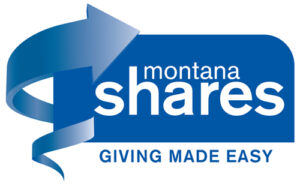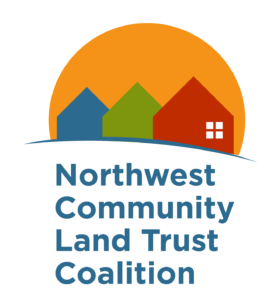A community land trust is a non-profit organization that holds land for the benefit of communities in order to preserve the affordability of homes, farms, ranches, and other land-based assets.
Most CLTs in the United States operate specifically to preserve housing affordability. Trust Montana holds land for a variety of uses.
CLTs create permanent affordability for community members by:
1) separating the ownership of land from the buildings on top of the land;
2) investing subsidy to ensure affordability of the buildings; and,
3) enforcing resale restrictions on the buildings to preserve the affordability long-term.
The Process for Buyers
The buyer purchases just the buildings and signs a ground lease agreeing to limit the equity they will take out at resale. This ensures the initial investment of subsidy stays with the property. This provides equity-building opportunity for people who are otherwise stuck in the rental market. When the homeowner sells, the property remains affordable to the next buyer, and the buyer after that. Homeowners pay taxes on what they own, and, depending on the community and the local tax base, they may pay taxes on the land as well.
CLT History
Most CLTS in the U.S. focus on providing housing, but they can be used for so much more: the first CLT was established in 1969 by sharecroppers in Georgia to ensure access to agricultural land and economic opportunity for African American farmers. You can learn more about New Communities, the first CLT in the United States, here.

Today, there are more than 200 community land trusts in the U.S., with new CLTs being established in communities of all sizes and in all areas of the country. CLTs are recognized as one of the most effective tools to fight gentrification and displacement in cities, where outside investors and real estate speculators can push rents and property values beyond the reach of working people — but they also work to make blighted neighborhoods more livable.
Some great examples of other Community Land Trusts and the grassroots efforts that make them possible are in Burlington, VT, Chapel Hill, NC, Oakland, CA, Denver, CO, and Buffalo, NY.
Trust Montana is chartered to hold land in order to facilitate and protect a multitude of different community assets in addition to housing: agricultural working lands, open space, historic preservation, and commercial development. We partner with local organizations and community leaders in the areas where we work to ensure our projects are community-driven.
In 2009, during the Great Recession — when many families lost their homes, retirement savings, and pensions — a Lincoln Institute of Land Policy study found that CLT homeowners were eight times less likely to go into foreclosure than market-rate homeowners. This is due to the subsidized purchase price CLT buyers benefit from, as well as the financial fitness education requirements that are an integral part of CLT programs. CLT organizations provide support to home owners in the case of default or financial hardship, and have the ability to intervene to try to purchase a home back from a homeowner before the home is foreclosed on.
- CLT homeownership is a form of shared-equity homeownership. The median amount of equity that shared-equity home owners take with them when they sell their home is $14,000.
- Nationally, six out of 10 shared-equity homeowners use their earned equity to purchase a traditional home after they sell.
- Seven out of 10 shared-equity buyers are first time home buyers
- On average, Trust Montana homeowners purchase their homes for $118,000 below market value
As of 2023, there are over 250 CLT homes in Montana: in Missoula, Kalispell, Bozeman, Big Sky, Helena, Belgrade, Livingston and Red Lodge.
Trust Montana is focused on providing low-income and workforce housing in places where the cost of real estate far outstrips what a person earning the median income can hope to pay. By providing homeownership opportunity to people who are otherwise locked out of the market due to property prices, Trust Montana and the other CLTs in the state are chipping away at the housing crisis in Montana.
The Montana Budget and Policy Center’s Rental Housing Affordability Map provides some insight into the problems faced by working Montanans who are trapped in the rental market.
Number of Hours at a Minimum Wage Job Necessary to Afford a Rental Home:
- Missoula County: 81 hours
- Gallatin County: 80 hours
- Carbon County: 81 hours
- Lewis and Clark County: 72 hours




